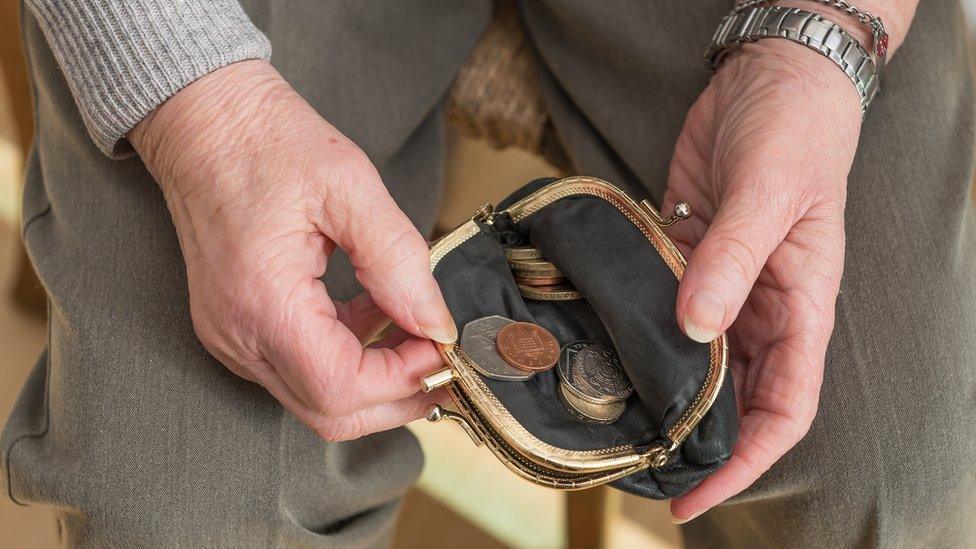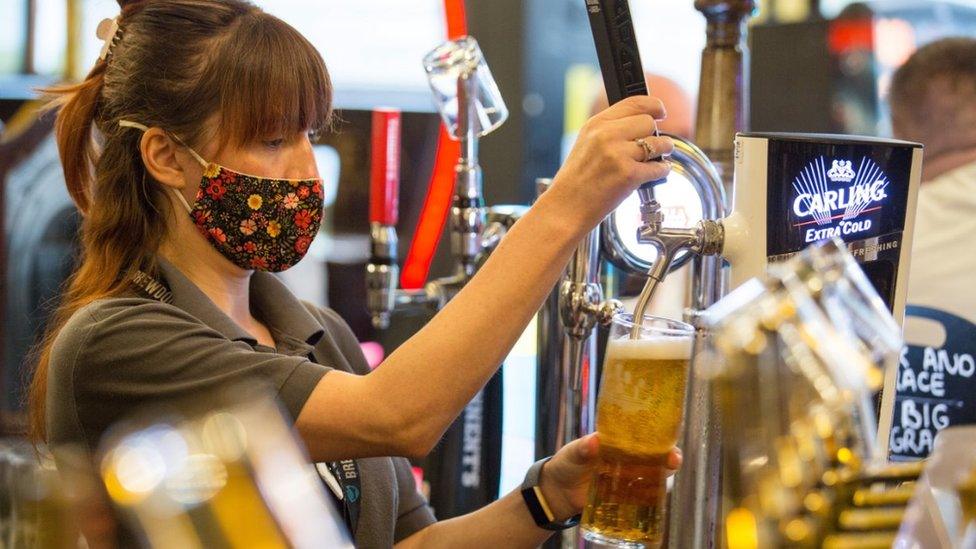Northern Ireland living standards 'improving' before Covid-19
- Published

In recent years Northern Ireland has had lower rates of poverty than the UK as a whole
There was an improvement in living standards in Northern Ireland in the year before the pandemic, official figures suggest.
Most indicators of poverty fell with a particularly significant decline in poverty among working-age adults.
That may reflect the historically strong job market before the pandemic hit.
Typical weekly wages also grew by 4% during 2019, well above the rate of inflation.
The Department for Communities uses two main measures of living standards, external: relative poverty and absolute poverty.
Poverty thresholds
An individual is considered to be in relative poverty if they are living in a household with an income below 60% of the typical UK income.
In 2019, the relative poverty threshold for a couple with no children was an income of £328 per week (before housing costs) from all sources or £17,151 per year.
An individual is considered to be in absolute poverty if they are living in a household with an income below 60% of the typical UK income as measured in 2010.
In 2019, the absolute poverty threshold for a couple with no children was an income of £300 per week (before housing costs) or £15,698 per year.
In 2019/20 13% of individuals were in absolute poverty, a fall from 16% the year before.
The fall was bigger among working-age adults falling from 16% to 11%.
There was also a statistically significant decline in relative poverty among working age adults, from 18% to 14%.
In recent years Northern Ireland has had lower rates of poverty than the UK as a whole.
For example in 2019 the absolute poverty rate for the UK was 18% compared to 13% in Northern Ireland.
That may be because Stormont introduced measures to mitigate the impact of benefit cuts.
Related topics
- Published25 March 2021

- Published23 March 2021
